
How to Use Solar Panel: Examples, Pinouts, and Specs
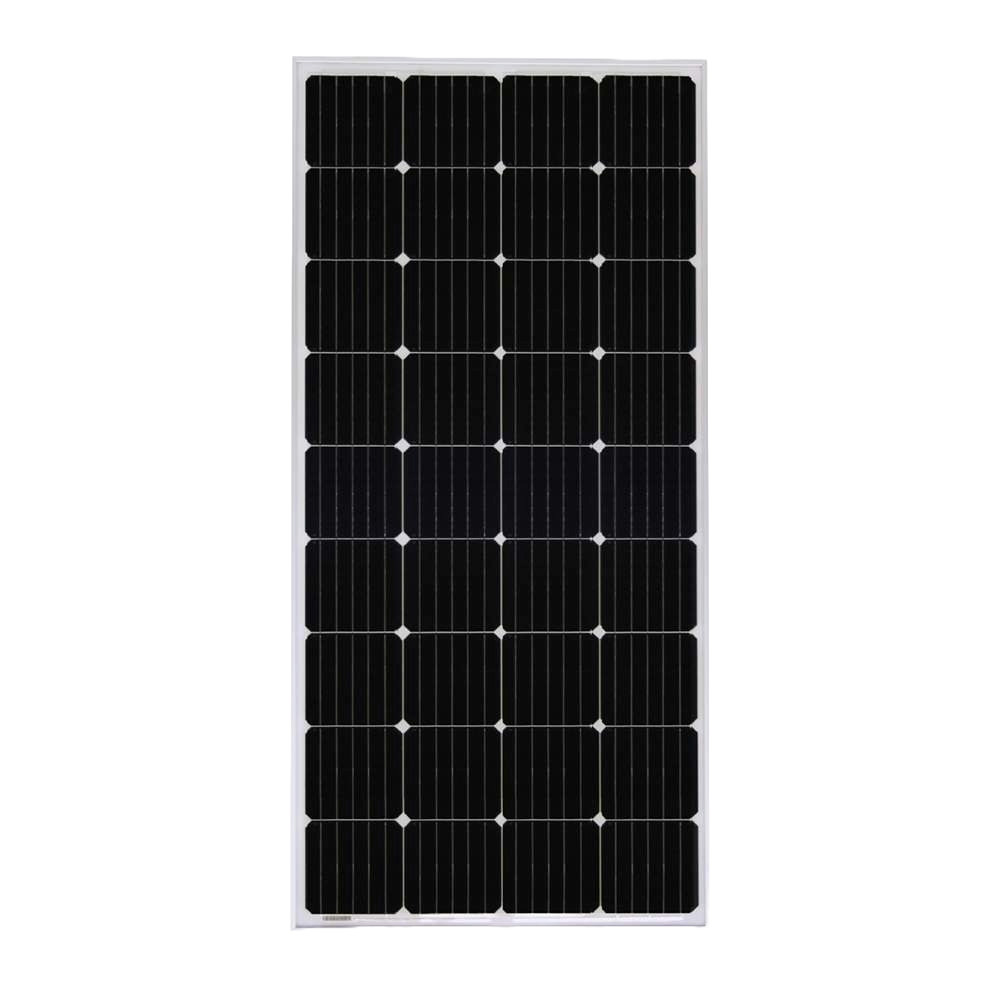
 Design with Solar Panel in Cirkit Designer
Design with Solar Panel in Cirkit DesignerIntroduction
A solar panel is a device that converts sunlight into electrical energy using photovoltaic (PV) cells. These cells are made of semiconductor materials that generate electricity when exposed to sunlight. Solar panels are widely used in renewable energy systems to provide clean and sustainable power.
Explore Projects Built with Solar Panel
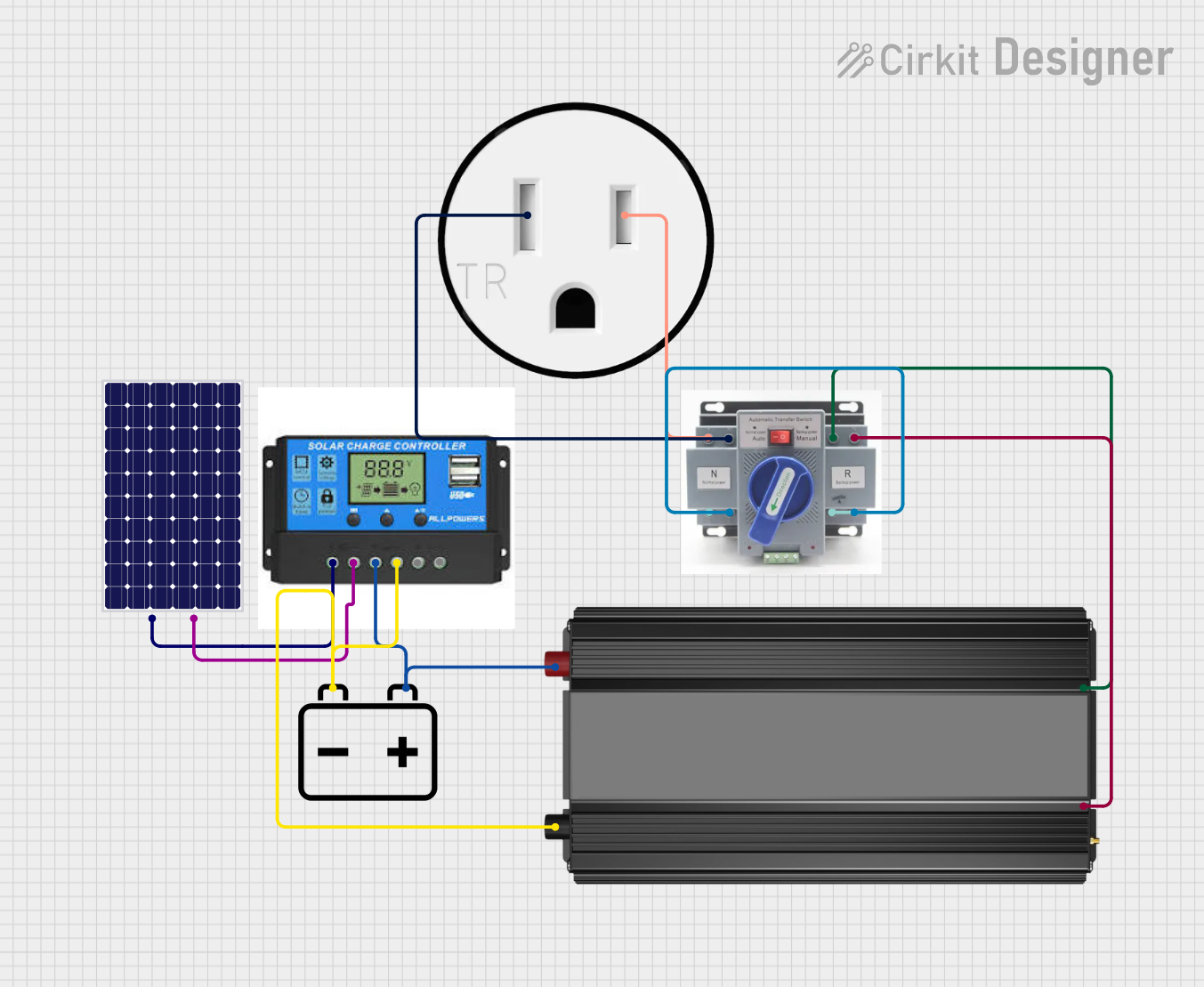
 Open Project in Cirkit Designer
Open Project in Cirkit Designer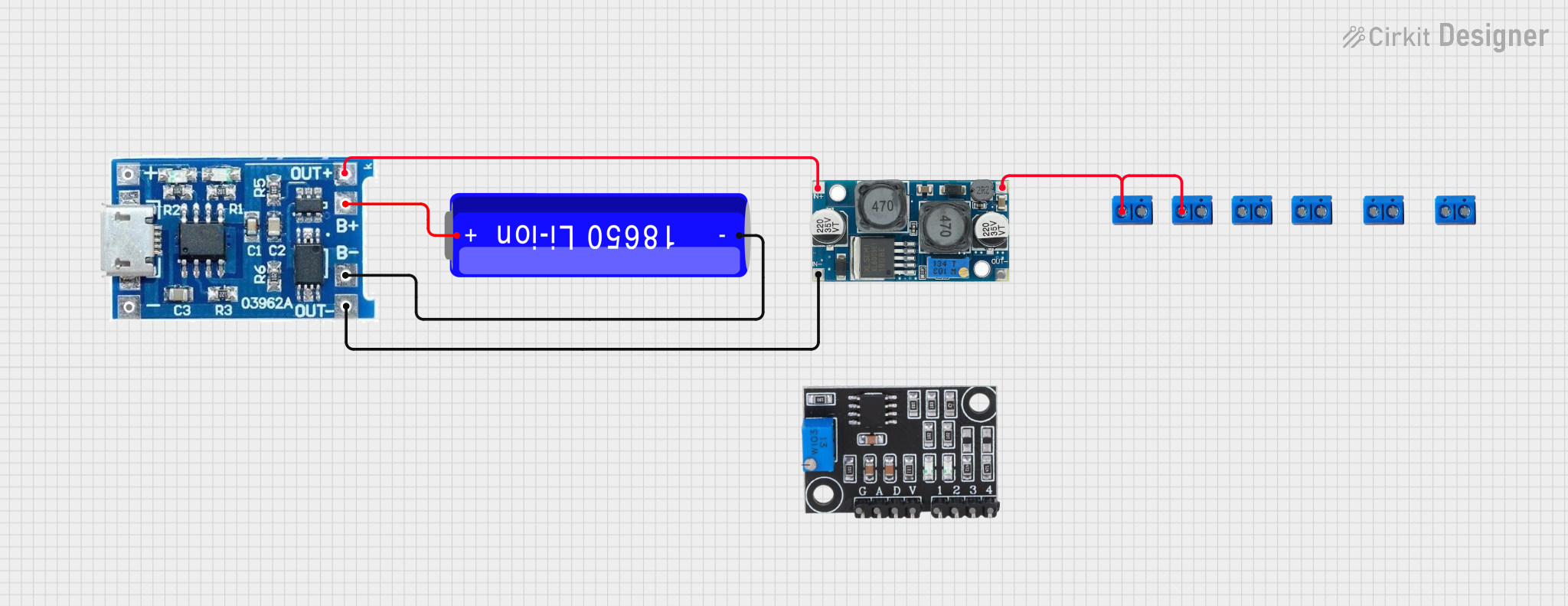
 Open Project in Cirkit Designer
Open Project in Cirkit Designer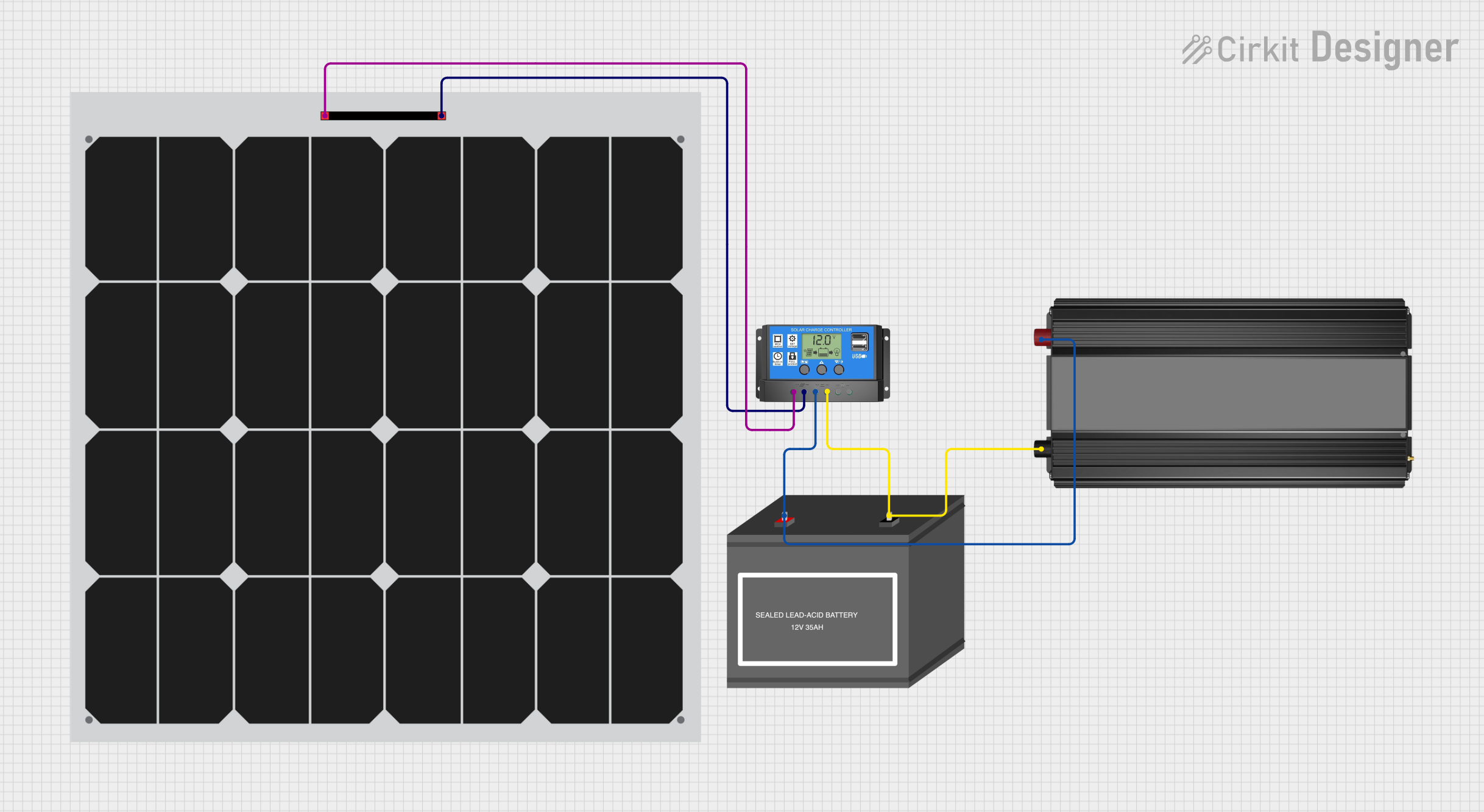
 Open Project in Cirkit Designer
Open Project in Cirkit Designer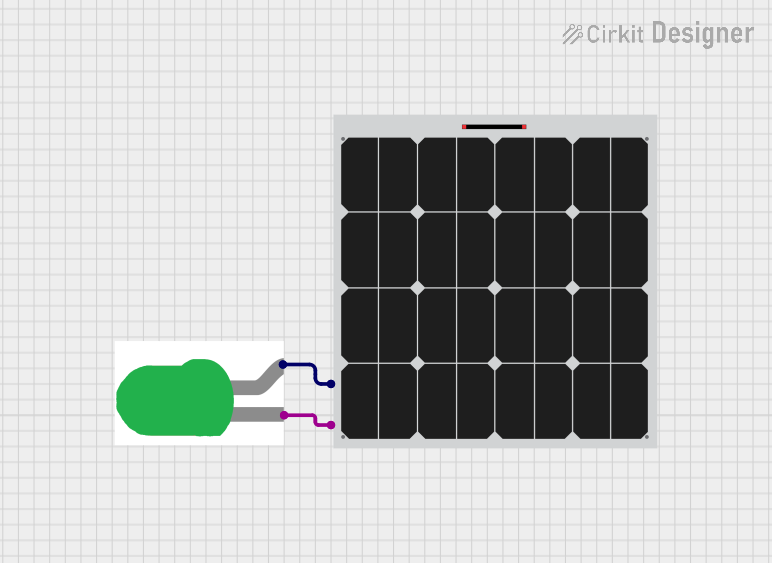
 Open Project in Cirkit Designer
Open Project in Cirkit DesignerExplore Projects Built with Solar Panel

 Open Project in Cirkit Designer
Open Project in Cirkit Designer
 Open Project in Cirkit Designer
Open Project in Cirkit Designer
 Open Project in Cirkit Designer
Open Project in Cirkit Designer
 Open Project in Cirkit Designer
Open Project in Cirkit DesignerCommon Applications and Use Cases
- Residential and commercial solar power systems
- Off-grid power solutions for remote areas
- Charging batteries in portable devices
- Powering small electronic projects and IoT devices
- Integration into solar-powered vehicles and streetlights
Technical Specifications
Below are the general technical specifications for a typical solar panel. Note that actual values may vary depending on the specific model and manufacturer.
| Parameter | Specification |
|---|---|
| Maximum Power (Pmax) | 10W to 400W (varies by model) |
| Open Circuit Voltage (Voc) | 18V to 45V |
| Short Circuit Current (Isc) | 0.5A to 10A |
| Maximum Power Voltage (Vmp) | 16V to 36V |
| Maximum Power Current (Imp) | 0.5A to 9A |
| Efficiency | 15% to 22% |
| Operating Temperature | -40°C to +85°C |
| Dimensions | Varies (e.g., 300mm x 200mm for small panels) |
| Weight | Varies (e.g., 1kg to 25kg) |
Pin Configuration and Descriptions
Solar panels typically have two output terminals for electrical connections:
| Pin | Description |
|---|---|
| Positive (+) | The positive terminal for connecting to the load or charge controller. |
| Negative (-) | The negative terminal for connecting to the load or charge controller. |
Usage Instructions
How to Use the Solar Panel in a Circuit
- Positioning the Solar Panel: Place the solar panel in direct sunlight for optimal performance. Ensure it is angled correctly based on your geographic location to maximize sunlight exposure.
- Connecting to a Load or Battery:
- Use a charge controller to regulate the voltage and current output from the solar panel, especially when charging batteries.
- Connect the positive terminal of the solar panel to the positive input of the charge controller and the negative terminal to the negative input.
- From the charge controller, connect the output terminals to the battery or load.
- Using with an Arduino UNO:
- A solar panel can power an Arduino UNO through a voltage regulator or a battery system.
- Ensure the voltage output from the solar panel matches the input voltage requirements of the Arduino (typically 5V via USB or 7-12V via the barrel jack).
Example Code for Arduino UNO
Below is an example of using a solar panel to power an Arduino UNO and measure the voltage using an analog pin.
// Example: Measure solar panel voltage with Arduino UNO
// Ensure the solar panel output is regulated to a safe voltage for the Arduino.
const int solarPin = A0; // Analog pin connected to the solar panel output
float voltage = 0.0; // Variable to store the measured voltage
void setup() {
Serial.begin(9600); // Initialize serial communication
}
void loop() {
int sensorValue = analogRead(solarPin); // Read the analog value
voltage = sensorValue * (5.0 / 1023.0); // Convert to voltage (5V reference)
// Print the voltage to the Serial Monitor
Serial.print("Solar Panel Voltage: ");
Serial.print(voltage);
Serial.println(" V");
delay(1000); // Wait for 1 second before the next reading
}
Important Considerations and Best Practices
- Avoid Overloading: Ensure the connected load does not exceed the maximum power output of the solar panel.
- Use a Charge Controller: Always use a charge controller when charging batteries to prevent overcharging or damage.
- Weatherproofing: If the solar panel is used outdoors, ensure it is weatherproof and protected from extreme conditions.
- Shading: Avoid partial shading of the solar panel, as it can significantly reduce its efficiency.
Troubleshooting and FAQs
Common Issues and Solutions
Low Power Output:
- Cause: Insufficient sunlight or shading.
- Solution: Ensure the panel is in direct sunlight and clean any dirt or debris from the surface.
Overheating:
- Cause: High ambient temperatures or poor ventilation.
- Solution: Install the panel in a well-ventilated area and avoid placing it on heat-absorbing surfaces.
No Output Voltage:
- Cause: Loose or incorrect connections.
- Solution: Check all connections and ensure the positive and negative terminals are correctly wired.
Battery Not Charging:
- Cause: Faulty charge controller or mismatched voltage.
- Solution: Verify the charge controller is functioning and ensure the solar panel voltage matches the battery requirements.
FAQs
Can I connect a solar panel directly to a battery?
- It is not recommended. Use a charge controller to prevent overcharging and damage to the battery.
What happens if the solar panel is partially shaded?
- Partial shading can reduce the overall efficiency and power output of the panel. Use bypass diodes to minimize this effect.
Can I use a solar panel indoors?
- Solar panels are designed for outdoor use in direct sunlight. Indoor use will result in significantly reduced power output.
How do I clean a solar panel?
- Use a soft cloth or sponge with water to clean the surface. Avoid abrasive materials that could scratch the panel.